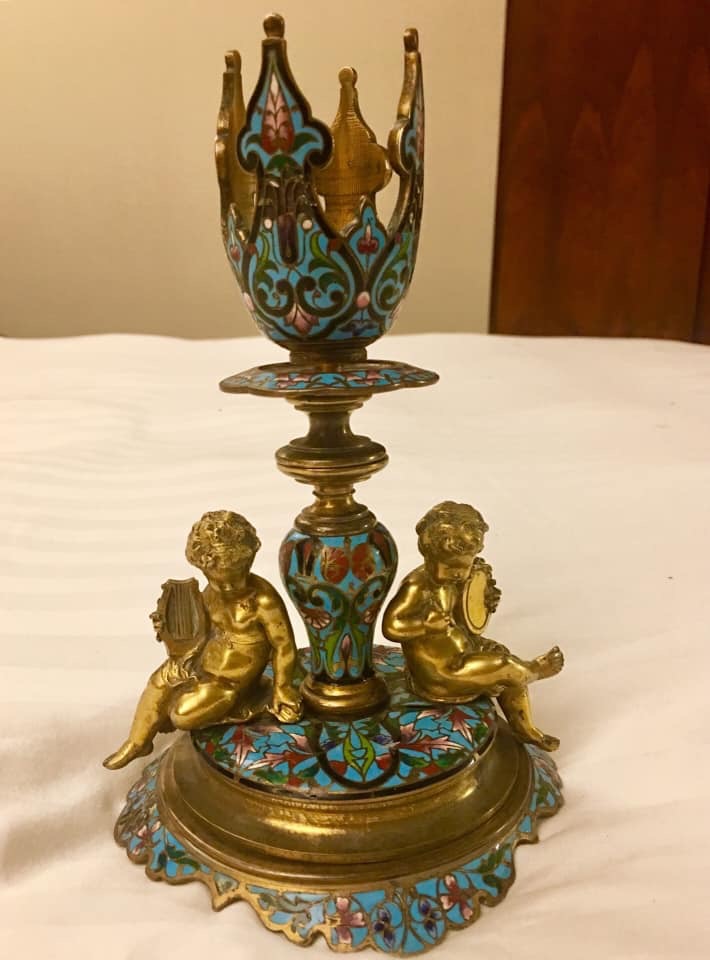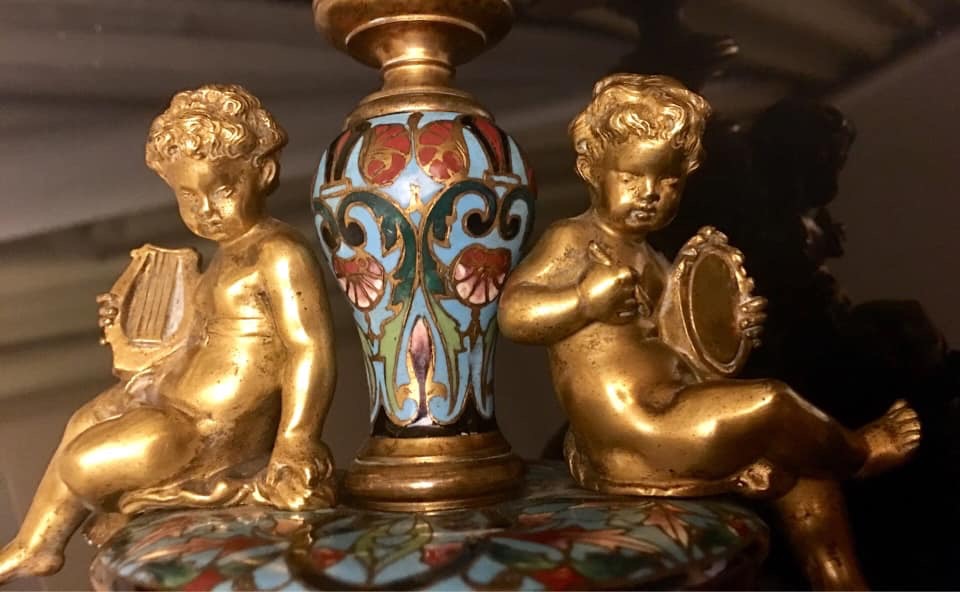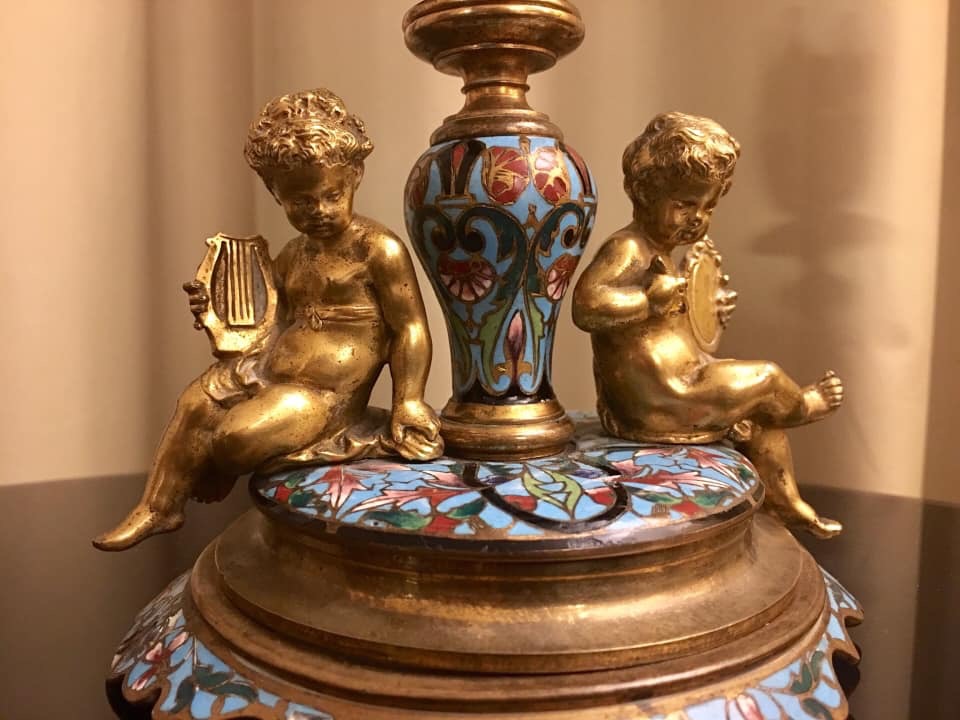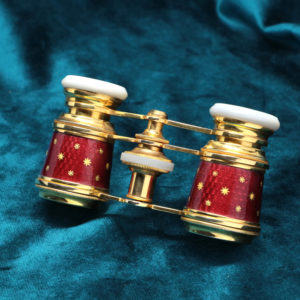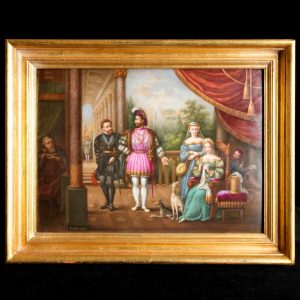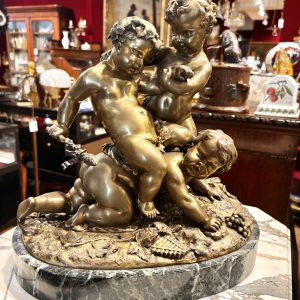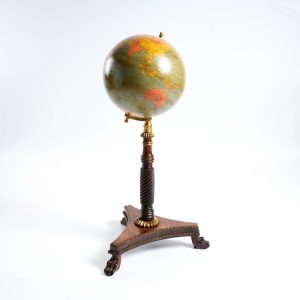描述
Cloisonné技法介紹
One of the oldest and best-known enamelling techniques, widely seen in precious metalwork and goldsmithery, Cloisonné derives its name from the French word (cloison) for “compartment” or “partition”. In simple terms, cloisonné enamelling is a three-stage process. First, flat metal strips (or wire) made of gold, silver, brass, or copper are soldered onto the surface of the metal object being decorated, so as to create tiny mini-walled cellular compartments. Next, these partitioned compartments are filled either with inlays of cut gemstones or other precious materials, or with colourful vitreous enamel paste. Finally, the whole construction is fired in a kiln, given a smooth finish and polished. Known to Classical Antiquity and medieval Christian art, as well as Islamic art throughout the Middle East, and Byzantine culture across the Eastern Roman Empire, cloisonné enamelling also appeared in Chinese art during the Ming Dynasty (1368-1644) and Qing Dynasty (1644-1911). In Japan, it was a popular method of decoration during the Edo period (1603-1868) and Meiji period (1868-1912). A more advanced and visually impressive cloisonné technique is known as Plique-à-jour, in which the “compartments” are made using temporary walls which are later removed after the enamel has cooled. During the era of Romanesque art, cloisonné was gradually superceded in Europe by champlevé enamelling, which uses sunken rather than raised compartments.
Cloisonné是最古老的、廣為人知的琺瑯畫技法之一,經常在金器或是貴重金屬飾品裡見到。Cloisonné的法文原意為”分開”或是”分離”,而他的做法也就跟這意思一樣。簡單的來說,Cloisonné技法大致分為三個步驟。首先,再欲上色金屬表面上的平放間隔金屬片條,可能是純金、純銀或是青銅黃銅等其他貴金屬,並將這些金屬片條焊在其表面。而這些金屬片條也就形成了一個圖案的外線條並作為阻擋物將每個不同區塊的顏料分開來。接下來,這些圖案區塊就被分別的用手繪的方式填上琺瑯顏料,並在同時放上欲鑲嵌寶石或是貴重石頭作為裝飾。最後整個表面經過窯爐加熱至熔點,在冷卻後用浮石打磨至其散發光澤。目前已知最早的Cloisonné技法出現在古希臘時代,而在中世紀的歐洲基督教國家、東歐或是伊斯蘭國家,以及拜占庭、東羅馬帝國等等都有出現過。另外Cloisonné技法也傳到了亞洲地區,在中國的明朝與清朝時期都有這類技法的出現。而日本則是出現在江戶跟明治時代,在當時的工匠技法是相當的流行。在之後Cloisonné更被開發出了更多樣的技術,例如工匠們先暫時性的將金屬條放上,等待琺瑯顏料冷卻後再將金屬條取出,藉以達成不同的效果。羅馬藝術的演變裡可以看出Cloisonné技法也是漸漸地被工匠們開發、演變成不一樣的技術。例如Champlevé技法不使用金屬條,而是在凹槽圖樣上作畫。

